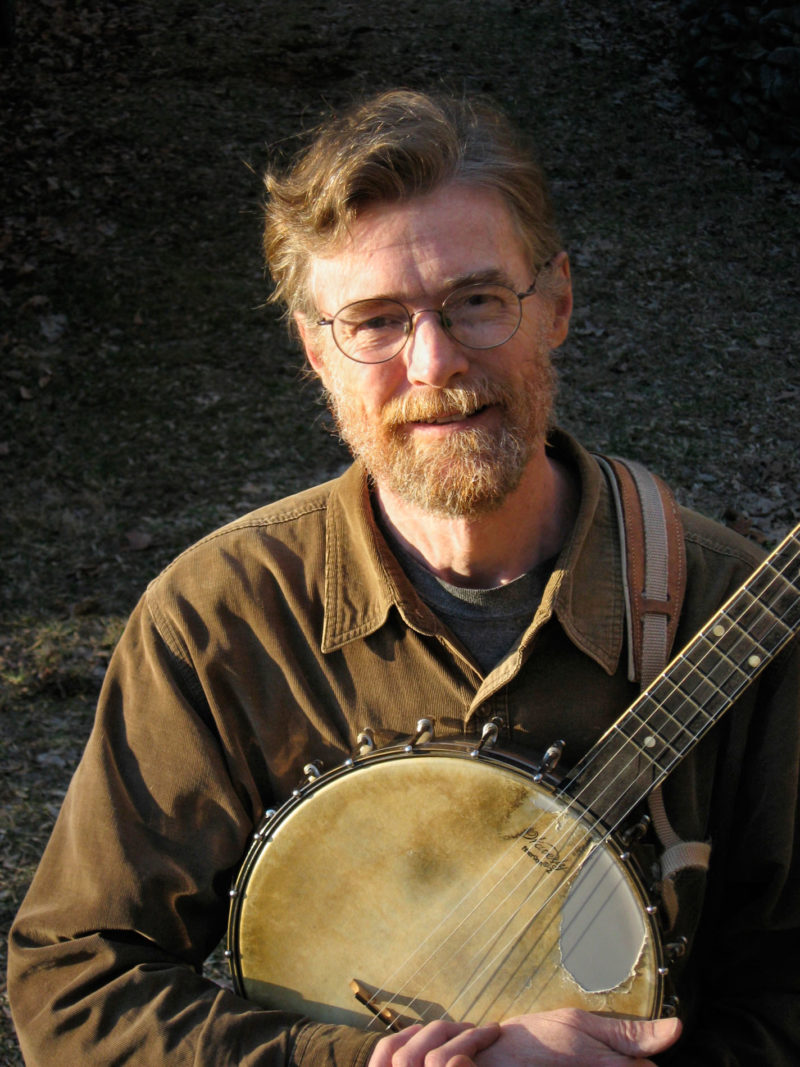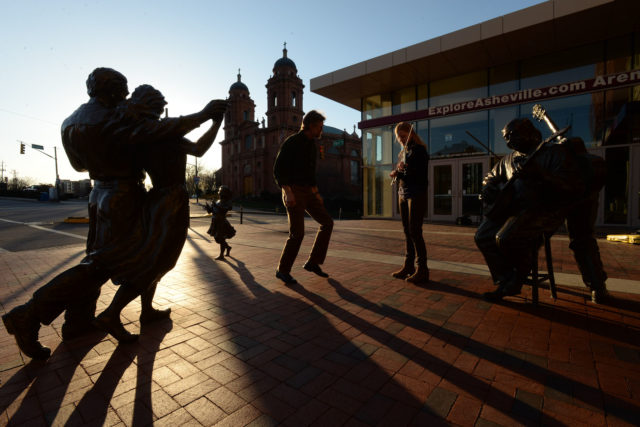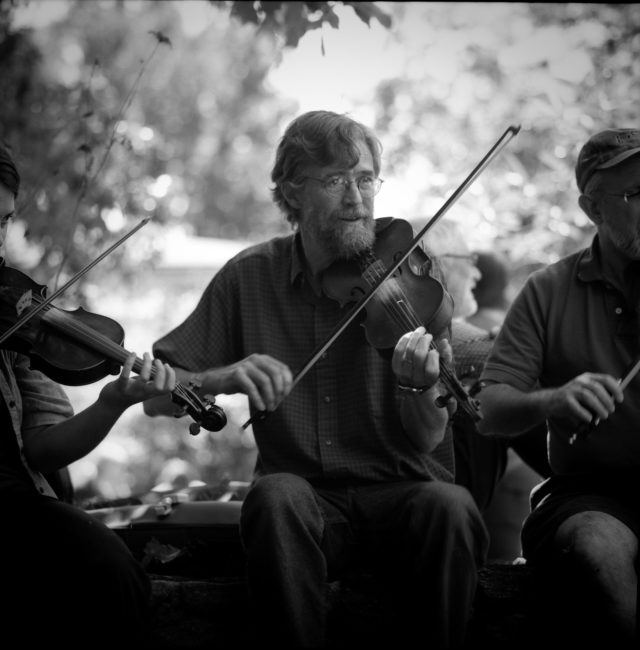
Professor Phil Jamison is the director of the Traditional Music Program at Warren Wilson College.
Releasing a book is a milestone for all authors. But Warren Wilson College’s Phil Jamison hoped 14 years of work would ensure his book went beyond personal fulfillment. The Smithsonian Institution is helping him realize those expectations. The professor is slated to speak about his work at the Center for Folklife and Cultural Heritage in October.
Jamison’s book, “Hoedowns, Reels, and Frolics: Roots and Branches of Southern Appalachian Dance,” looks at traditional Appalachian dance and turns the table on, what he says, is the oft-told incomplete history. The nationally known dance caller, old-time musician and flatfoot dancer argues the distinctive folk dances are not the unaltered jigs and reels of the early British settlers, but hybrids that developed over time, drawing from the European, African-American and Native American traditions.
“I hope to dispel some of the myths that have been longstanding for the last 100 years,” said Jamison. “These dances are not just ancient Anglo-Celtic heritage that has been locked away in isolation in the mountains, but it includes multicultural and multiracial influences, and it is a continually changing tradition.”

Professor Phil Jamison dances to music played by alumna Maddy Mullany in downtown Asheville.
The event gives Jamison the chance to explore the powerful influence of black culture. He will show how practices such as dance calling and specific steps combined with white European forms create distinctly “American” dances.
“I hope to dispel some of the myths that have been longstanding for the last 100 years,” said Jamison. “These dances are not just ancient Anglo-Celtic heritage that has been locked away in isolation in the mountains, but it includes multicultural and multiracial influences, and it is a continually changing tradition.”
The event gives Jamison the chance to explore the powerful influence of black culture. He will show how practices, such as dance calling and specific steps, combined with white European forms to create distinctly “American” dances.
“Nobody would deny that square dancing is an American dance form. If you listed other types of music or dance that you would consider ‘American,’ you would include jazz, blues, bluegrass, rock and roll, tap dance, swing dance, etc. Each of these different types of music and dances that we think of as ‘American’ has black influence, so it should be no surprise that square dancing does, too,” Jamison added.
As the director of Warren Wilson College’s Traditional Music Program, Jamison is typically a featured speaker or performer at Appalachian music and dance programs across the country. On Sept. 16, he will offer a keynote address to the Western North Carolina Historical Association. The next weekend, Sept. 22-24, Jamison heads to Berkeley, California, for the Berkeley Old-Time Music Convention. He’ll be back in time for Western Carolina University’s Mountain Heritage Day the following Saturday.
In addition to the book talk, Jamison will also speak and perform at the Smithsonian Institution’s 2017 Archives Fair. His Oct. 21 presentation at the National Museum of American History is titled “Western North Carolina Buckdancers, Flatfooters, & Charleston Dancers.”
For more information about Jamison and to access his performance calendar, visit http://philjamison.com.

Professor Phil Jamison will perform and present about his research at the Smithsonian Institution in October.